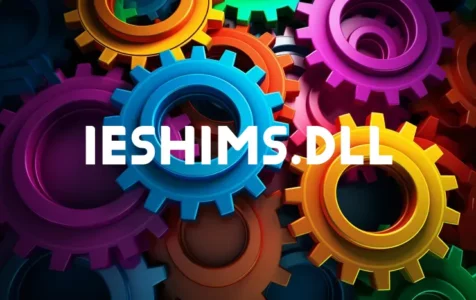Introduction to IESHIMS.DLL
IESHIMS.DLL, short for “Internet Explorer Compatibility Shims,” is a Dynamic Link Library (DLL) file associated with Microsoft’s Internet Explorer browser. It plays a crucial role in the browser’s functioning by providing compatibility shims to facilitate the smooth running of Internet Explorer, particularly when interacting with various browser extensions and add-ons.
Is IESHIMS.DLL Safe to Run?
The legitimate IESHIMS.DLL that comes with Internet Explorer is safe to run. It is an official Microsoft file designed to aid Internet Explorer’s operation. However, it is essential to ensure that the file is genuine and not a disguised piece of malware.
Could IESHIMS.DLL Be Virus or Malware?
While the authentic IESHIMS.DLL file is certainly not a virus or malware, it’s possible for malicious entities to create a file with the same name to deceive users. These rogue files might try to exploit Internet Explorer or the system. Therefore, it is vital to perform regular system scans with updated antivirus software to detect and remove malicious files. There are instances where security software may incorrectly flag the genuine IESHIMS.DLL as suspicious, which is typically known as a false positive. User reports such as those on the Malwarebytes forum have indicated that at times, security software has incorrectly marked this DLL as a Trojan, but this was promptly fixed with updates to the antivirus definitions.
Common Issues With IESHIMS.DLL
Issues with IESHIMS.DLL can arise due to missing, corrupted, or inadvertently deleted instances of the file. Dependency Walker, a utility that lists a program’s dependencies, might sometimes incorrectly report that IESHIMS.DLL is missing, especially on outdated systems or when working with older editions of Internet Explorer. This can lead to errors or incompatibility messages, particularly on systems running Windows XP, as one user noted on Stack Overflow.
Expert Tip: For smoother PC performance, consider using a PC optimization tool. It handles junk files, incorrect settings, and harmful apps. Make sure it's right for your system, and always check the EULA and Privacy Policy.
Special offer. About Outbyte, uninstall instructions, EULA, Privacy Policy.
Problems can also occur during certain application installations, where the presence of IESHIMS.DLL might be a prerequisite, or during updates of Internet Explorer or Windows itself. Some users have reported issues with Windows software updates due to a corrupted IESHIMS.DLL file, as discussed in the Malwarebytes community forums.
Fixing Issues With IESHIMS.DLL
To troubleshoot and resolve problems with IESHIMS.DLL, here are detailed instructions:
1. Scan for Malware: Use your antivirus program to scan for potential malware masquerading as IESHIMS.DLL. Ensure that your security software is up to date.
2. System File Checker (SFC): Run the built-in System File Checker to replace missing or corrupt files. Open the Command Prompt as an administrator and type the following command: `sfc /scannow`
3. Windows Update: Ensure you have the latest updates for Windows and Internet Explorer installed.
4. Rollback: If you started encountering problems after updating Internet Explorer or installing new software, consider rolling back to a previous version.
5. Reinstall Application: If a particular program is having trouble due to a missing IESHIMS.DLL, try reinstalling the software to restore the DLL file.
6. Manual Restore: If you have mistakenly deleted the IESHIMS.DLL file, you might be able to restore it from the Recycle Bin or by using a file recovery tool.
7. Use DISM: The Deployment Image Service and Management Tool (DISM) can help fix Windows corruption errors. Run Command Prompt as admin and type: `DISM /Online /Cleanup-Image /RestoreHealth`
If you encounter a false detection of IESHIMS.DLL as a virus, check for an update to your security software that may have resolved this issue.
Conclusion
IESHIMS.DLL is an important file directly linked with Internet Explorer. When experiencing issues with this DLL, follow the above troubleshooting steps carefully. Always download DLL files from reputable sources if you need to replace them. Keep in mind that online forums, including the Malwarebytes and Stack Overflow communities, can serve as valuable resources if you encounter difficulties. Remember to avoid websites with a high risk of providing unsafe DLL files, and when in doubt, reach out to tech forums or professionals for assistance.
